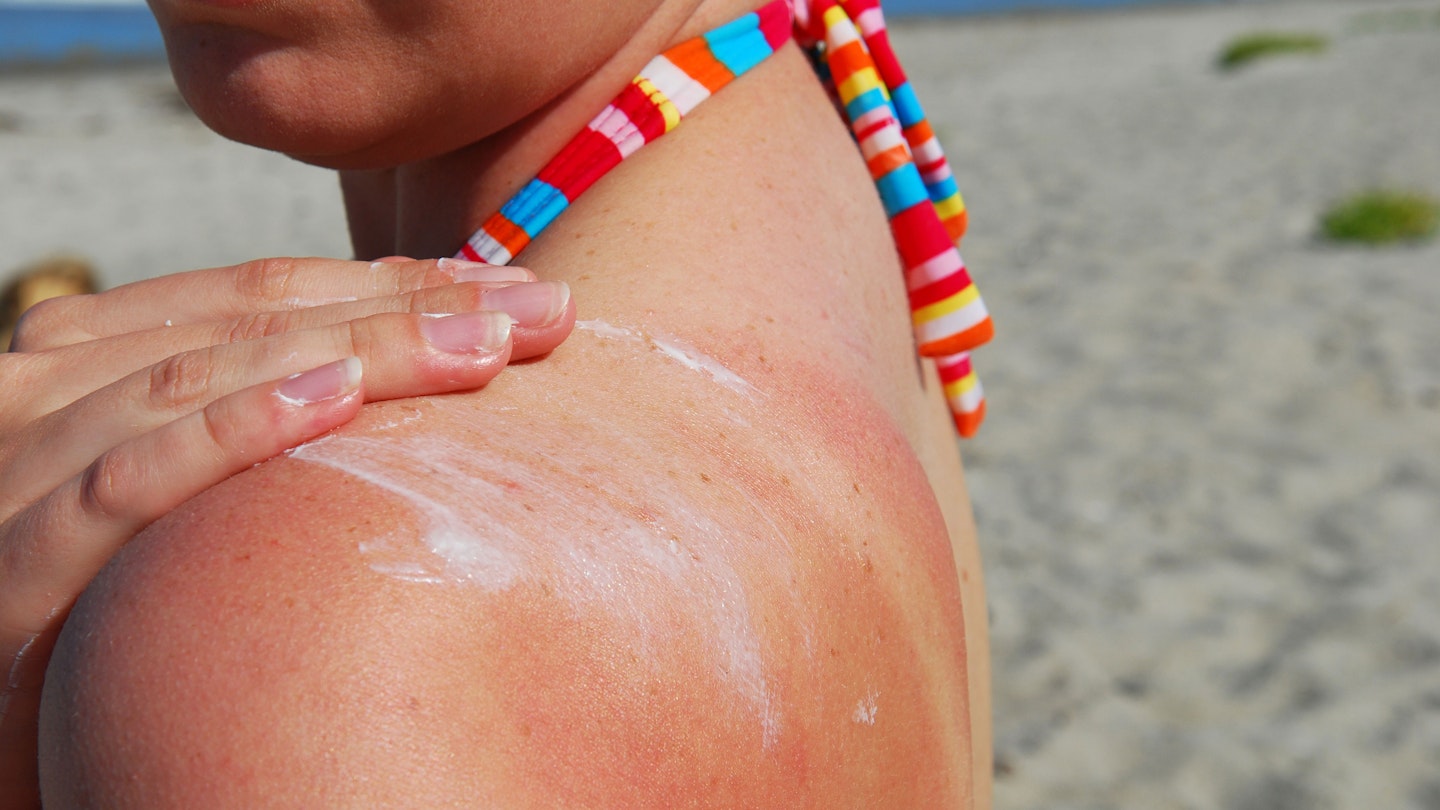All this isolating in the garden got you a little pink in the face? Here's how to treat mild to moderate sunburn at home and what to look out for when buying sun protection.
Warning signs
You can usually feel when you are burning, particularly on flat expanses of skin like the back and upper arms or thighs. When you can feel your skin getting particularly hot in one area, that’s the first sign you’re causing sun damage. Move into the shade and reapply sunscreen.
Aftersun treatments
If the damage has already been done and your skin is red, tight and itchy, moisturise with a thick-consistency aftersun treatment with high aloe vera or soy content. Aloe has natural anti-inflammatory and anti-septic qualities which will not only keep any swelling and redness down, but also stop the area from getting potentially infected.
Soy also reduces inflammation thanks to the protective effects of phytoestrogens or of omega-3 fatty acid found in soy products. Avoid using products that rely on high chemical content like Benzocaine as they can potentially make inflammation worse.
Washing
Anyone who’s taken a shower with a recent burn will know just how painful it can be, but it’s important to wash off any of the days chlorine, salt or sweat plus any daily grime build up, to allow your skin to heal more easily.
Opt for a moisturising, non-scented body wash that will balance pH levels and avoid irritating the skin more, like Sanex or Femme Fresh. Carefully adjust your showers temperature so it’s cool enough to step under without scalding, and adjust the power of your shower if it has the option – a powerful spray of water on sunburn can be just as painful as a hot one!
Once you’ve finished bathing, carefully pat yourself dry and while there is still a layer of moisture on your skin, apply aftersun to trap moisture.
Painkillers
Like with all minor injuries, everyday painkillers like paracetamol and ibuprofen can help to ease swelling and soothe persistent discomfort. Always follow the instructions.
Stay hydrated
This is one you should be keeping on top of anyway in hot weather (or really any weather for that matter). Sunburn can raise your body temperature and lead to dehydration, so be sure to take plenty of fluids regularly throughout the day. Sports drinks contain added electrolytes and can help restore the natural balance in our bodies to allow for normal cell function, that can be lost through dehydration.
Ice packs and irritated skin
Though it can be tempting, avoid using ice packs directly on affected skin, because the extreme cold can actually be just as damaging as the heat and could cause further blistering. Can you imagine having to peel away something frozen to already sore skin? Ouch. Similarly, do not pick blisters or peel away peeling skin. Rolling a cold can of coke or beer gently across the affected area can be soothing.
Protect skin until fully healed
It’s imperative to keep sunburnt skin out of direct sunlight until it’s completely healed. This means sitting in the shade where possible and covering up with loose, comfortable clothing. Remember, the sun’s rays are still strong enough to cause damage even through clouds, so it's still important to use protection on an overcast day.

Sunburnt skin may seem like a short-term effect of sun damage, but harmful UVA and UVB rays can cause a number of longer-lasting health issues. UVA is associated with premature skin aging and pigmentations, and UVB has strong links to malignant melanoma and other skin cancers.
To protect against both UVA and UVB rays, choose a sunscreen with a high SPF – 30 or above is effective at protecting against UVB rays – and a UVA star rating of four of five.
Most daily moisturisers contain an SPF of around ten or fifteen, but for prolonged exposure to the sun while sunbathing or on holiday requires more robust protection.
